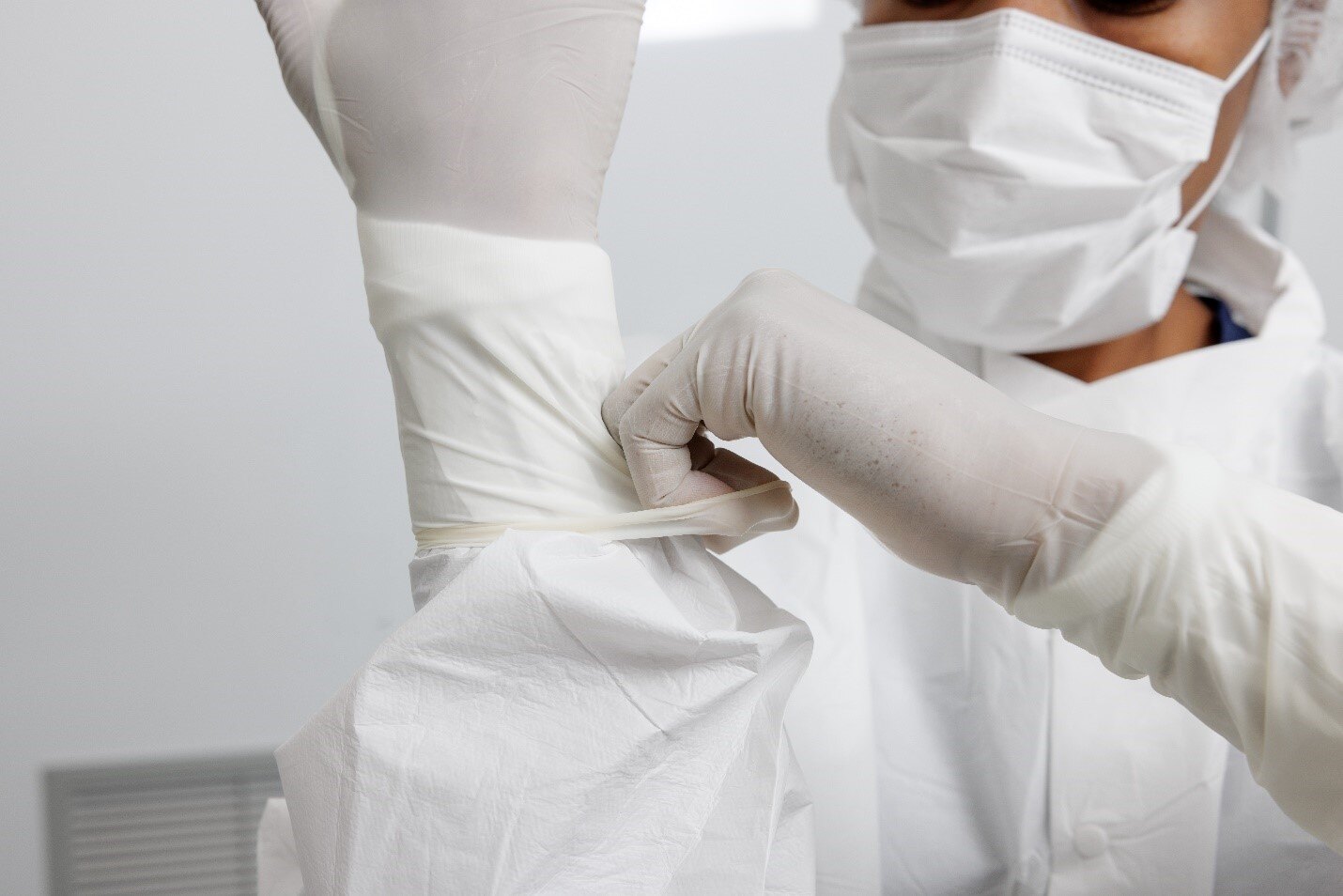As a compounding pharmacist or technician, ensuring the sterility of your compounded sterile preparations (CSPs) is of utmost importance. Here are five elements to follow to reduce microbial bioburden:
1. Implement a thorough cleaning and disinfection schedule for the sterile compounding area.
To maintain a microbial state of control, it's essential to establish detailed standard operating procedures (SOPs) for cleaning and disinfection of the Primary Engineering Control (PEC) and Secondary Engineering Control (SEC). Once the SOPs are developed, ensure staff are trained according to these elements to eliminate any gaps between what is supposed to be done and what happens on a day-to-day schedule. Cleaning these elements are just as important as compounding and must be consistent to achieve a microbial state of control.
2. Use an EPA-registered sporicidal disinfectant for wiping surfaces of any supply/component going into the buffer room.
To minimize the risk of contamination, it's required that all surfaces of any supplies or components that enter the buffer room be wiped. Though USP <797> permits the wipe down to occur with sterile 70% IPA, an EPA-registered disinfectant or a sporicidal disinfectant is a generally recognized best practice since 40% of items coming into the cleanroom suite have been found to be contaminated with bacterial spores. (Cockcroft et al. Validation of Liquid Transfer Disinfection Techniques for Transfer of Components into Hospital Pharmacy Cleanrooms. Hospital Pharmacist. January 2001. 8(8):226-32. Protect yourself during material handling).
3. Ensure strict and consistent garbing practices.
Workers are the chief source of contamination in controlled spaces therefore developing specific garbing standard operating procedures (SOPs) and ensure ongoing compliance by all who enter the compounding area is of utmost importance.
Here are some examples of garbing recommendations that can be included in your garbing SOPs:

- Clean personal glasses outside the controlled area using a germicidal disinfectant for the frames and a disposable lens wipe for the lenses. If needed, use an elastic strap (entirely covered by the head cover) to secure eyeglasses from slipping down the nose.
- Pay attention to detail when putting on masks so that they fit properly, folds face down on the outside and are pulled under the chin and tight across the bridge of the nose.
- Stand well away from those performing hand hygiene when donning gowns so that you are not splashed with water.
- Ensure garb fits properly as it should not require adjustment which later spreads contamination to gloved hands.
- Additionally, placing a mirror where head and face covers are donned is recommended so that workers are able to check that they are properly placed.
4. Routinely clean and disinfect the operator’s staging table.
Wipe the staging table in the same way that you would the deck of the Primary Engineering Control (PEC). Have only the components (and documentation if paper is still used) for one batch or prep on the staging table. Wipe the top of the staging table with sterile IPA before placing components and documentation for the next batch or prep on it. Routinely cleaning, disinfecting, and sanitizing the staging table can help prevent surface sampling excursions inside the PEC.
5. Teach staff about proper worker conduct inside the buffer room and Primary Engineering Controls (PECs).
Improper worker conduct can have a negative impact on microbial bioburden in the compounding area. Workers must move slowly and deliberately inside the compounding area and minimize the number of trips in and out of the buffer area (or inside the perimeter line of the Segregated Compounding Area). Avoid excessive talking in the rooms and do not speak when compounding to prevent outgassing from masks into the PEC. Do not rest your arms on the deck. Before reentry, reapply sterile 70% IPA to hands, fingers, and wrists anytime gloved hands leave the front plane of the PEC. Never bring personal cell phones inside the compounding areas.
By following these five elements, you can reduce the risk of contamination and promote safe and effective compounded sterile preparations for your patients.


.jpg)



